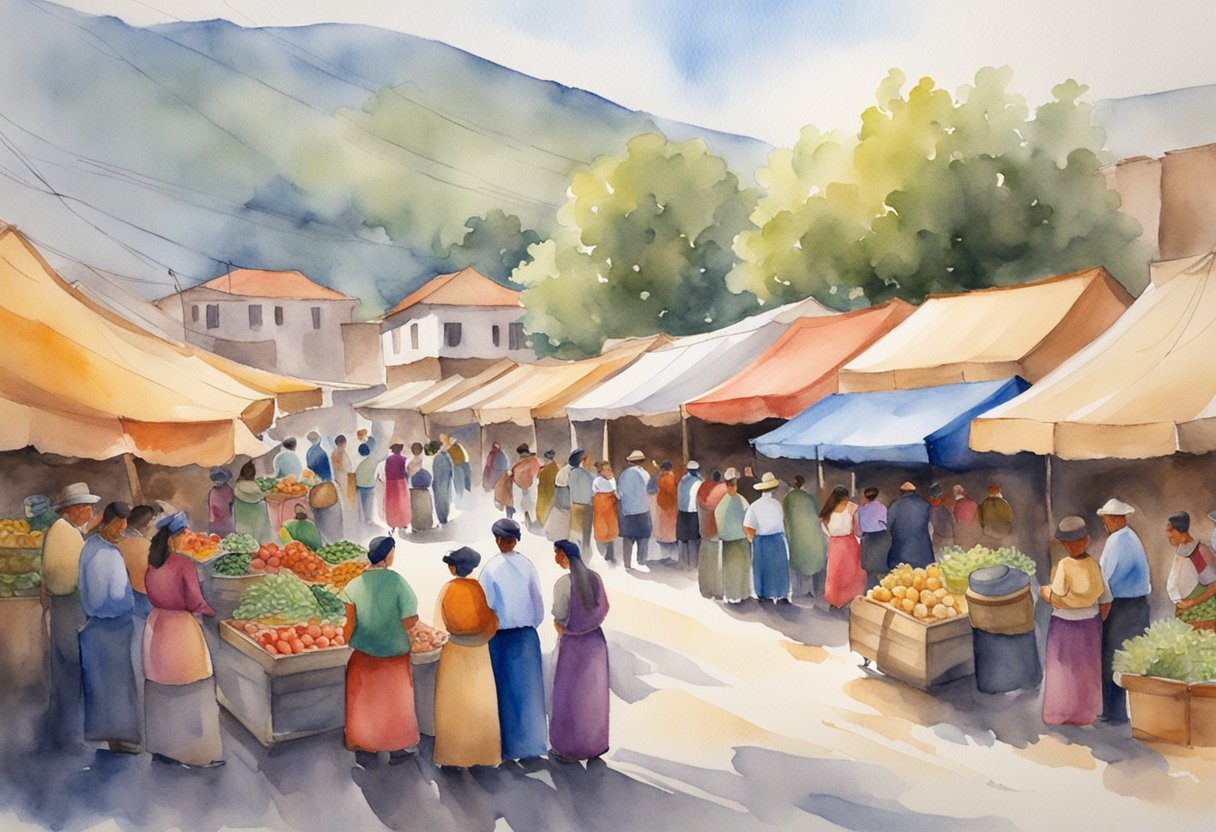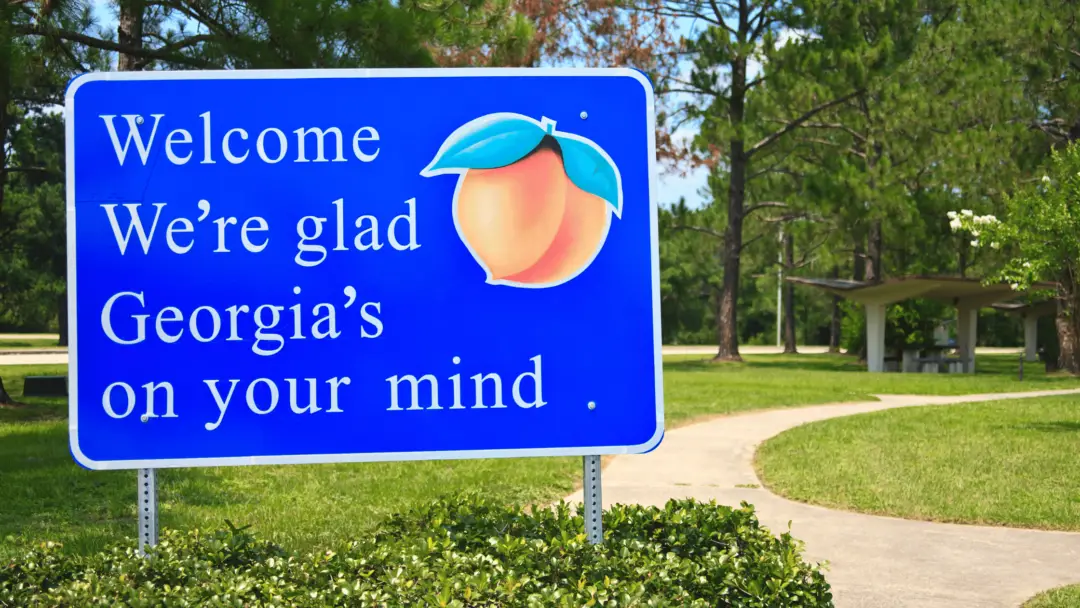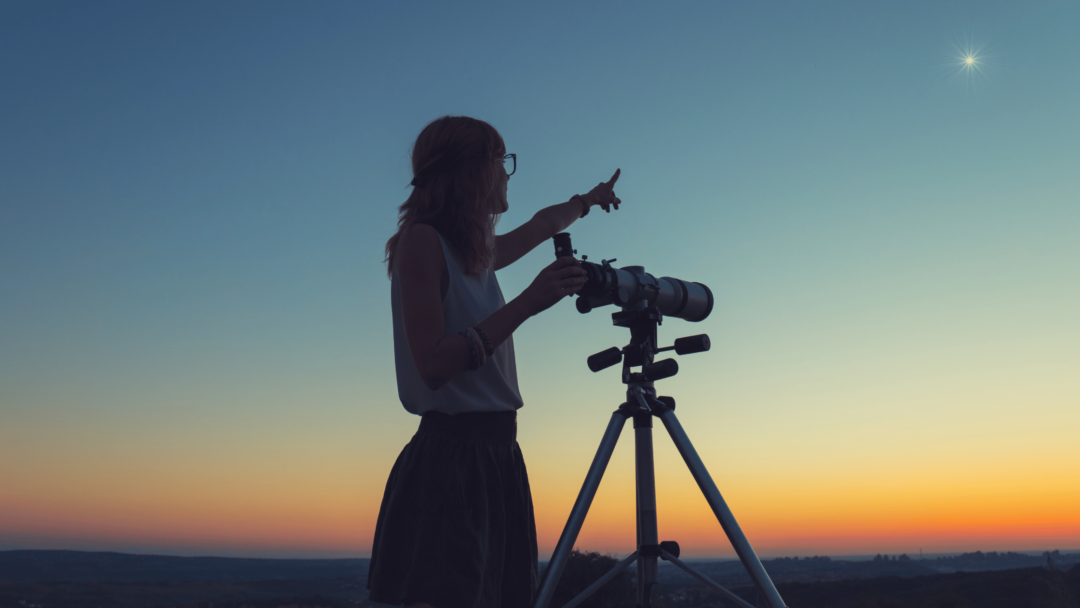Chile is a country rich in culture and history, and the hobbies enjoyed by its residents reflect this diversity.
Traveling and reading are the most popular hobbies in Chile. Whether you’re strolling through vibrant markets, exploring ancient ruins, or diving into the latest bestseller, there are countless opportunities for cultural enrichment.

Lunch is an integral part of Chilean daily life, often the most complete meal of the day. With dishes featuring fish, meat, potatoes, or rice, it provides a perfect backdrop for social interactions and leisurely afternoons.
This cultural emphasis on enjoying life’s simple pleasures extends to hobbies as well.
Chileans love engaging in outdoor activities like skiing in the Andes, stargazing in the Elqui Valley, and exploring the fjords of Patagonia.
To get started with these hobbies, immerse yourself in the local customs and traditions.
Visit local libraries or bookstores to join a reading group, or plan a trip to iconic destinations such as Rapa Nui or the Marble Caves.
By participating in these popular activities, you’ll gain a deeper appreciation for the rich cultural tapestry of Chile.
The Cultural Tapestry of Chile

Chile’s cultural identity is a complex blend of indigenous and Spanish influences, storied literary history, and diverse religious traditions.
Influence of Indigenous and Spanish Heritage
Chile’s culture is shaped significantly by both its indigenous peoples and Spanish colonizers.
The Mapuche, one of the most prominent indigenous groups, have deeply influenced Chilean customs and traditions. Their practices, such as the We Tripantu festival, celebrate the winter solstice and the Mapuche New Year.
Spanish colonization brought Catholicism and European traditions to Chile.
Spanish influence is visible in Chilean architecture, religious practices, and the Spanish language itself.
This blend of Mapuche and Spanish elements forms the unique social and cultural fabric of today’s Chile.
Literary Giants: Gabriela Mistral and Pablo Neruda
Two literary giants from Chile have made a lasting global impact.
Gabriela Mistral, the first Latin American woman to win the Nobel Prize in Literature, is renowned for her poems exploring themes of love, sorrow, and Latin American identity. Her work remains an essential part of the literary canon in Chile and beyond.
Pablo Neruda, another Chilean Nobel laureate, is famous for his passionate and vividly descriptive poetry.
His works often delve into political themes, nature, and human emotions.
Together, Mistral and Neruda have established Chile as a country with a rich literary tradition that continues to inspire readers and writers worldwide.
The Rich Tapestry of Chilean Traditions and Religion
Chilean traditions are diverse and vibrant, reflecting the country’s multifaceted history.
Significant festivals include Fiestas Patrias, which celebrate Chilean independence with parades, music, dance, and traditional cuisine. These events highlight national pride and cultural heritage.
Religion plays a crucial role in Chilean life, with Catholicism being the dominant faith due to Spanish colonial influence.
Religious festivals, such as Semana Santa and Christmas, are widely observed, embedding religious practices into daily life.
Despite this, there’s also a presence of Protestantism and indigenous beliefs, reflecting Chile’s cultural diversity.
Chile’s Diverse Geographic Highlights

Chile boasts an unmatched array of geographical wonders. From the towering Andes to the stark beauty of the Atacama Desert, you can experience diverse landscapes perfect for numerous hobbies and explorations.
From Andes to Pacific: Exploring the Natural Beauty
Stretching along the entire length of the country, the Andes mountains offer spectacular views and numerous outdoor activities.
Hiking trails such as the W Trek in Torres del Paine provide breathtaking scenery and challenge your endurance. Glaciers, lakes, and peaks punctuate the landscape, inviting you to explore further.
Moving west, Chile’s Pacific coast features rugged cliffs and serene beaches.
Coastal towns like Valparaiso and Viña del Mar have a rich cultural vibe, combining beach life with vibrant urban activities.
Here, you can enjoy water sports like surfing and sailing or simply relax by the sea.
Patagonia and Atacama: Adventure Hobbies in Extreme Landscapes
Patagonia in the south showcases raw, untamed beauty. With its dramatic fjords and ice fields, it’s a paradise for adventurers.
Hiking, trekking, and wildlife spotting are popular in places like Torres del Paine National Park. The region’s remote wilderness is perfect for those seeking solitude and connection with nature.
In stark contrast, the Atacama Desert to the north is the driest place on earth. Despite its harsh conditions, it offers unique recreational activities.
From sandboarding on massive dunes to stargazing under the crystal-clear skies, the Atacama is a playground for thrill-seekers. The area around San Pedro de Atacama is also great for exploring salt flats, geysers, and hot springs.
The Culinary Delights of Chile

Chile’s culinary scene offers a rich blend of indigenous and European influences, resulting in a unique gastronomic experience. From traditional dishes and regional specialties to world-class wines, you can savor a variety of flavors that capture the essence of Chilean culture.
Traditional Chilean Cuisine and Dining Customs
Chilean cuisine is a celebration of its diverse geography.
You can enjoy empanadas, stuffed pastries typically filled with meat, cheese, or seafood. Another must-try is Pastel de Choclo, a delicious corn pie layered with meat, olives, and hard-boiled eggs.
In coastal areas, fresh seafood is a staple, with dishes like ceviche and curanto, a traditional seafood and meat stew.
Dining in Chile is a communal experience often enjoyed with family and friends, particularly during large weekend gatherings known as “asados” or barbecues.
Wine Enthusiasts: Vineyards and Local Varietals
Chile is renowned for its wine production, boasting some of the best vineyards in the world.
The country’s diverse climate allows for a variety of grapes to flourish, including Cabernet Sauvignon, Merlot, and the signature Carménère. The Central Valley is particularly famous for its vineyards.
While exploring Chilean wine, you can visit numerous vineyards that offer tours and tastings.
Wineries such as Concha y Toro and Santa Rita provide insights into wine-making traditions and offer a taste of their finest varietals.
Don’t miss out on trying Pisco, a local grape brandy, which is often enjoyed in cocktails like the Pisco Sour.
Street Foods and Regional Specialties
Chilean street food offers quick, delicious bites that highlight regional specialties.
Sopaipilla, a fried dough snack often served with a sweet syrup or hot sauce, is a popular treat.
In the bustling markets, you can find Chorrillana, a hearty dish of fries topped with beef, onions, and eggs.
Each region boasts its own unique flavors.
In the north, you’re likely to encounter dishes influenced by Andean culture, while the south showcases German-inspired treats like Kuchen, a variety of cakes filled with fruits, cheese, or jams.
Exploring street vendors and local markets provides an authentic taste of Chile’s rich culinary diversity.
Social and Leisure Activities in Chile

Chile offers a vibrant mix of activities that reflect its cultural heritage. Whether it’s engaging in traditional sports or exploring local arts, you’ll find an array of social and leisure pursuits that reveal the heart and soul of this diverse nation.
Soccer and Rodeo: A Nation’s Passion
Soccer, or fútbol, is more than just a sport in Chile; it’s a shared passion that unites communities.
The country’s professional league, the Campeonato Nacional, and international matches featuring the national team, La Roja, draw enthusiastic spectators. Enthusiasm for soccer permeates daily life, with local games taking place in neighborhoods across the country.
On the other hand, rodeo is an official national sport that showcases Chile’s rural traditions.
Rodeos are especially popular during the Fiestas Patrias celebrations. Skilled huasos (cowboys) demonstrate their prowess in corralling cattle within a medialuna. Attending a Chilean rodeo provides insight into the nation’s history and agricultural roots.
Dance and Music: Expressing the Chilean Soul
Dance and music are central to Chilean culture.
The cueca, Chile’s national dance, is performed with energetic footwork and handkerchief-waving to lively guitar and accordion music. This traditional dance captures the essence of Chilean courtship rituals and is especially prominent during national celebrations.
Beyond the cueca, Chile’s musical landscape is rich and varied.
Folk music, influenced by indigenous, Spanish, and Andean cultures, sets the stage for fiestas and community gatherings.
Modern Chilean musicians continue to shape the country’s music scene, blending traditional sounds with contemporary genres.
Street performers and local festivals offer ample opportunities to experience this vibrant cultural expression firsthand.
Arts and Craftsmanship: Embracing Chilean Artistry
Chile’s artistic community thrives through various forms of expression.
In cities like Valparaíso, street art transforms urban spaces into open-air galleries. Murals reflecting social and political themes engage onlookers and offer a glimpse into the nation’s collective consciousness.
Handicrafts and fine arts also play a prominent role.
Artisans create beautiful textiles, ceramics, and jewelry that reflect Chile’s cultural identity.
Visiting markets or artisan fairs allows you to appreciate the craftsmanship and purchase unique souvenirs. In museums and galleries, you can explore works by famous Chilean artists and contemporary creators who continue to influence the country’s artistic landscape.
Outdoor and Adventure Hobbies

Chile offers a vast array of thrilling outdoor and adventure activities, taking advantage of its diverse landscapes from towering mountain ranges to the expansive Pacific coast.
Scaling the Andes: Mountaineering and Skiing
The Andes Mountains provide a perfect backdrop for mountaineering and skiing enthusiasts.
In winter, you can experience premier skiing at world-class resorts like Valle Nevado and Portillo. These resorts offer well-maintained slopes, modern facilities, and stunning mountain scenery.
For mountaineers, the Andes offer numerous peaks, including the towering Aconcagua. Technically in Argentina, it’s accessible from Chile. Closer to home, the Ojos del Salado, the world’s highest volcano, presents a challenging yet rewarding climb.
Always ensure you have adequate gear and consider guided tours for safety.
Coastal Pursuits: Surfing and Sea Exploration
Chile’s long Pacific coastline is a haven for surfers and sea adventurers.
Surfing hotspots like Pichilemu and Arica are famous worldwide for their consistent waves and vibrant surfing communities.
Whether you’re a beginner or an experienced surfer, these locations offer waves to suit all skill levels.
For those interested in exploring beyond the surf, the coast features impressive sea caves, marine reserves, and opportunities for scuba diving and snorkeling.
The clear waters and abundant marine life make for unforgettable underwater experiences.
Remember to check local conditions and respect marine life during your visits.
Historical Context of Chilean Hobbies

Chilean hobbies have been shaped by significant historical events, from the country’s fight for independence to periods of political turmoil. Understanding these influences provides insight into how these activities have evolved and what they signify today.
Historical Struggles: From Independence to Human Rights
Chile gained independence from Spain in 1818, a monumental event that fostered a sense of national pride and community.
Traditional crafts, like Mapuche weaving and pottery, flourished during this period. They became symbols of cultural identity and resistance.
During the 20th century, Chile experienced political and social upheavals, including the military coup in 1973 led by Augusto Pinochet.
These events significantly impacted hobbies and leisure activities. Many cultural practices were suppressed and replaced with state-sanctioned activities.
Post-dictatorship, Chile faced the challenge of restoring its cultural practices. Many citizens advocated for human rights through art, music, and crafts.
Chile’s Path Through Peace and Conflict
Chile’s history of conflict and resolution has a profound impact on its leisure activities.
During Pinochet’s rule, many individuals engaged in clandestine hobbies to express dissent and maintain a semblance of normalcy.
Literature, especially poetry by figures like Pablo Neruda, played a critical role in preserving Chile’s cultural voice.
As the nation transitioned to democracy, hobbies evolved to reflect the new era of peace.
Activities such as public theater, folk music, and traditional dances regained popularity. These pursuits not only enriched personal lives but also helped in national healing and reconciliation.
Modern Chile: Society and Lifestyle

Chileans have witnessed significant changes in society and lifestyle due to recent socio-economic reforms and the pervasive influence of globalization. These changes have impacted gender roles, social norms, and the nation’s overall quality of life.
Gender Roles and Social Norms
In contemporary Chile, gender roles have become increasingly fluid.
Men and women both actively participate in the workforce, although traditional expectations still influence some aspects of daily life.
You will see more women in leadership positions, reflecting progress due to reforms promoting gender equality.
Family remains integral to social structure, with extended families often living close together or even under one roof.
Despite modern shifts, traditional celebrations and communal gatherings highlight the importance of familial bonds. This reinforces a strong sense of community among Chileans.
Quality of life varies significantly across different regions.
Urban centers tend to offer better access to education and healthcare, while rural areas may struggle with poverty.
The COVID-19 pandemic has further highlighted these disparities, prompting targeted reforms aimed at improving infrastructure and public services.
The Impact of Modernization and Globalization
Modernization and globalization have reshaped many aspects of Chilean society.
The rise of digital technologies has spurred growth in various sectors, enhancing wealth and access to global markets.
As you navigate urban Chile, you’ll notice a blend of contemporary culture and traditional practices, from high-end shopping districts to preserved historical neighborhoods.
Global influences are evident in everything from fashion to cuisine, yet Chileans maintain a strong cultural identity.
Efforts to bridge the economic gap between urban and rural regions are ongoing, focusing on reducing poverty and improving living standards through reforms.
COVID-19 has accelerated some of these changes, with increased remote work and digital services becoming more prominent.
This transformation highlights the dynamic nature of Chilean society, constantly evolving to adapt to modern challenges and opportunities.
Planning Your Visit to Chile

When planning your visit to Chile, consider essential travel tips, must-see attractions, suitable accommodations, and understanding local language and cultural etiquette. These elements will help ensure a smooth and enjoyable experience.
Travel Tips and Must-See Attractions
Chile offers a range of attractions from bustling urban areas to natural wonders.
In Santiago, visit the historic Plaza de Armas, the city’s main square and a hub of Chilean culture.
For a taste of the desert, explore San Pedro de Atacama, a gateway to astonishing desert landscapes.
Outdoor enthusiasts will love Torres del Paine National Park in Patagonia for its hiking trails and stunning views. To blend adventure with history, trek to the giant Moai on Easter Island.
Check the local weather before traveling, as Patagonia and the Atacama Desert have varying climates.
Accommodations: Finding the Right Place to Stay
Chile provides a wide range of accommodation options to suit all budgets.
For budget travelers, a hostel offers affordable prices and a chance to meet fellow travelers. Notable hostel experiences can be found in Santiago and San Pedro de Atacama.
If you prefer more comfort, consider boutique hotels or Airbnb rentals in urban areas like Santiago.
For a luxurious stay, especially in tourist hotspots like Patagonia, upscale hotels offer beautiful views and excellent services.
Book your accommodation in advance during peak tourist seasons like the southern hemisphere summer (December to February).
Navigating Language and Cultural Etiquette
While Spanish is the official language, many Chileans use unique slang and colloquial expressions, which can be tricky to understand. Carrying a phrasebook or a translation app is highly recommended.
When greeting locals, a friendly “Hola” followed by a firm handshake or a kiss on the cheek is customary.
Respect local customs and be mindful of your manners; Chileans appreciate politeness and consideration.
Frequently Asked Questions

Chile boasts a variety of unique pastimes deeply embedded in its culture, traditions, and history. Engaging in these activities offers insight into the country’s rich heritage and community spirit.
What are some prevalent pastimes unique to Chilean culture?
One of the distinctive hobbies is the traditional dance called Cueca, which represents courtship rituals.
Rodeo also stands out, particularly in rural areas, where it is considered the national sport. Meanwhile, Chileans enjoy gathering for asados, or barbecues, highlighting social unity through shared meals.
Which cultural events are significant in Chile and when do they typically occur?
Fiestas Patrias, celebrated on September 18, marks Chile’s Independence Day.
During this period, you’ll find various traditional activities, including dancing, music, and rodeo exhibitions.
Another key event is La Tirana Festival in July, combining indigenous and Catholic traditions through vibrant dances and colorful costumes.
What aspects of Chilean culture are reflected in its popular hobbies?
The importance of family and community gatherings is evident in activities like asados and Cueca dancing.
You can see a strong connection to nature through hobbies such as hiking in the Andes and enjoying the country’s diverse landscapes.
These activities often reflect the Chilean values of hospitality and regional pride.
How can someone get involved with traditional Chilean activities?
Participate in local fiestas and community events, or join a dance workshop to learn Cueca.
Visiting local rodeos and trying your hand at an asado can also be great ways to immerse yourself in Chilean culture.
Connect with local clubs or community centers to find specific opportunities.
What role does Chile’s history play in shaping its contemporary hobbies?
Chile’s history of agriculture and rural living influences popular activities, like rodeo and traditional folkloric dances.
The country’s colonial past and indigenous heritage, too, contribute to the cultural richness observed in national celebrations and everyday pastimes, providing a historical context to modern hobbies.
What foods are integral to Chilean cultural practices and celebrations?
Empanadas, filled with meat, seafood, or cheese, are staple delights during national festivities.
Another essential dish is Pastel de Choclo, a corn pie often enjoyed during family gatherings.
Additionally, seafood plays a crucial role in coastal celebrations, reflecting the country’s extensive shoreline and fishing traditions.
For more about Chilean culture and its unique traditions, you can explore this comprehensive guide online.





